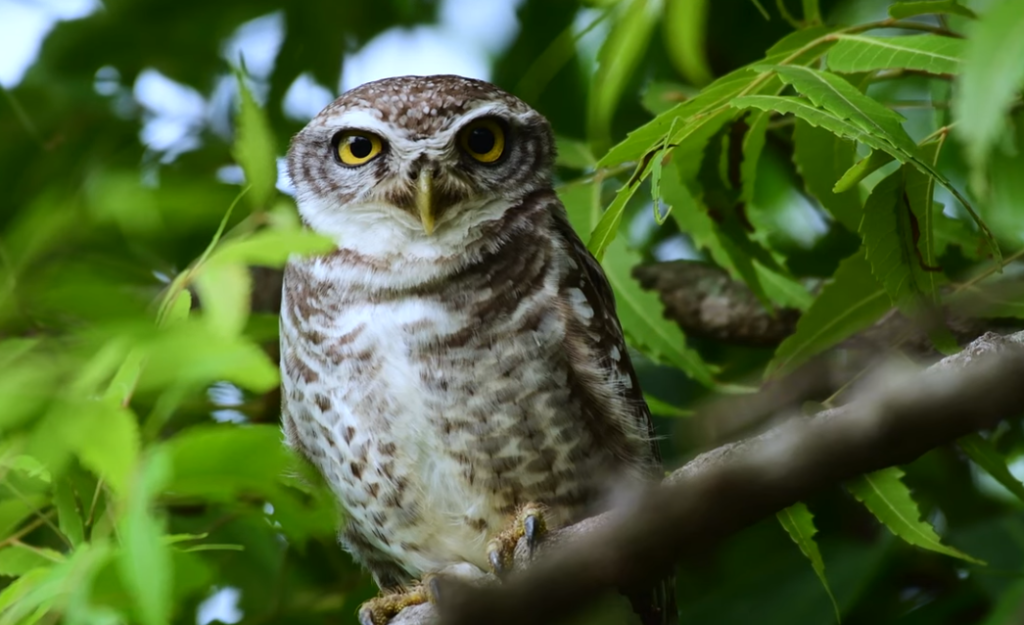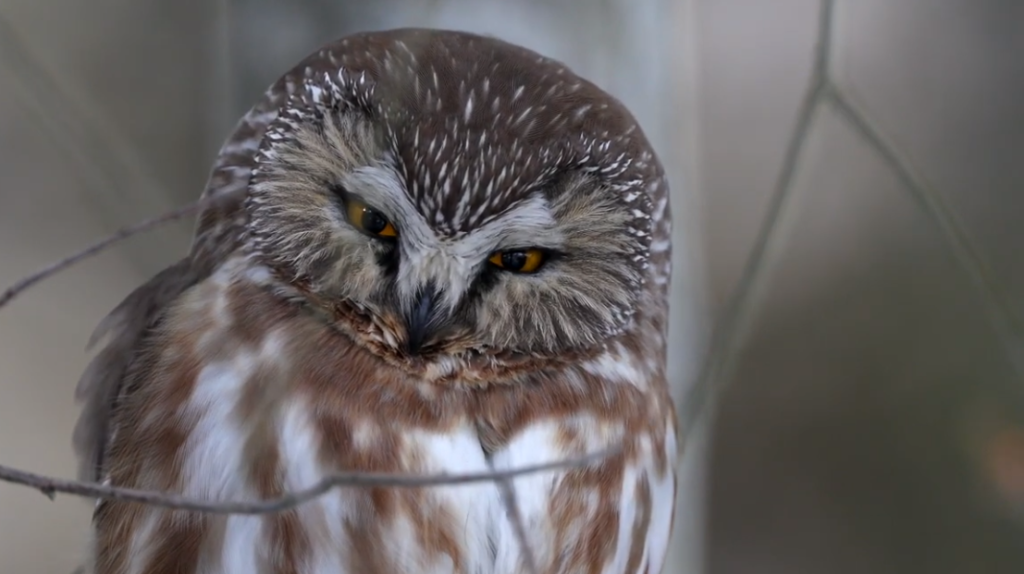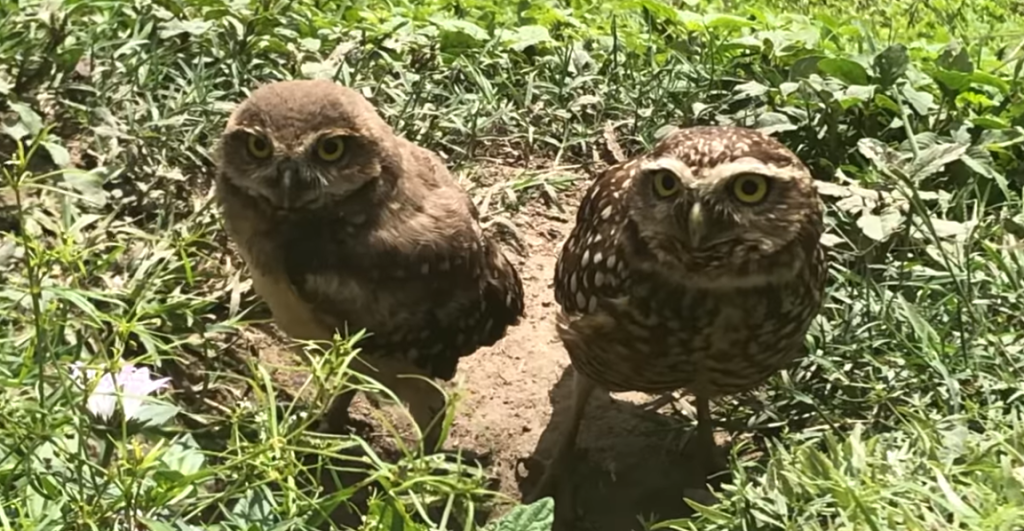How do owls show affection? Owls may not be known for their warm and fuzzy displays of love, but they have their own unique ways of showing affection.
Owls are not typically considered to be affectionate animals, but they do have some ways of showing their love and care for their mates and young. owls show affection by bill-fencing, grooming, cheek-rubbing, mutual vocalizations ,physical contact.
While they may not cuddle like dogs or purr like cats, these nocturnal birds communicate their affection through various behaviors.
In this article, we will explore the intriguing world of owl affection and delve into the different gestures and signals that these magnificent creatures use to express their love for one another.
So let’s spread our wings and embark on a journey to discover how owls reveal their deep-seated emotions!
How Do Owls Show Affection?
Owls are not typically considered to be affectionate animals, but they do have some ways of showing their love and care for their mates and young. Here are some of the ways that owls show affection:
- Grooming: Owls will often groom each other, which is a way of bonding and showing affection. They will preen each other’s feathers, remove parasites, and help each other stay clean.
- Cheek-rubbing: This is a common courtship behavior in owls, but it can also be seen between bonded pairs. The owls will rub their beaks against each other’s cheeks, which is a way of exchanging scents and marking each other as their own.
- Bill-fencing: This is another courtship behavior that involves the owls tapping their beaks together. It is thought to be a way of establishing dominance and displaying their strength.
- Mutual vocalizations: Owls will often make soft vocalizations to each other, such as twittering or hooting. These vocalizations can be a way of expressing affection, as well as communicating other needs, such as hunger or danger.
- Physical contact: Owls may also show affection by sitting close to each other or touching each other with their beaks or talons. This is especially common among bonded pairs and their young.
Understanding Owl Behavior
Understanding these aspects of owl behavior provides valuable insights into how they express affection towards mates or offspring within their social structure.
| Key Points |
|---|
| Nocturnal predators |
| Silent flight |
| Territorial nature |
| Hooting communication |
| Head movements |
| Courtship rituals |
By delving deeper into the intricacies of owl behavior patterns, we can appreciate the subtle ways in which these magnificent creatures show affection.
Do Owls Have Affection?
Owls are not naturally affectionate towards people. They are solitary animals that are only social during breeding season.

However, some owls can learn to form bonds with humans, especially if they are raised by humans from a young age.
How Do You Know if An Owl Is Happy?
There are a few things you can look for to tell if an owl is happy.
- Relaxed body language: A happy owl will have loose and fluffy feathers. Its eyes will be half-closed or closed, and its beak will be slightly open.
- Active and playful: A happy owl will be curious and active. It may preen its feathers, bob its head, or flap its wings.
- Responsive to you: A happy owl will be interested in you and will respond to your presence. It may make eye contact with you, hoot at you, or even land on you.
- Healthy: A happy owl will have a healthy coat of feathers and a bright eye. It will be alert and responsive to its surroundings.
How Do Owls Show Emotions?
Owls are not as expressive as some other animals, but they do show emotions in a variety of ways. Here are some of the ways that owls show emotions:
- Body language: Owls communicate a lot through their body language. A relaxed owl will have loose and fluffy feathers, while a stressed owl will have its feathers fluffed up and its body tense. An owl that is feeling threatened may also flatten its ears against its head and widen its eyes.
- Eyes: Owls’ eyes are very expressive, and they can be used to communicate a variety of emotions. A happy owl will have its eyes half-closed or closed, while a scared owl will have its eyes wide open and staring. An owl that is angry or aggressive may have its eyes narrowed and its pupils dilated.
- Hooting: Owls hoot to communicate with each other, and the different types of hooting can be used to express different emotions. For example, a soft hoot can be used to express happiness, while a loud hoot can be used to express aggression.
- Grooming: Owls groom each other as a way of bonding and showing affection. However, grooming can also be used as a way to relieve stress or anxiety.
- Bobbing: Owls bob their heads up and down as a way of greeting or showing affection. However, bobbing can also be used as a way to show aggression or dominance.
Can Owls Be Friendly?
Owls are not naturally friendly towards humans. They are solitary animals that are only social during breeding season.
However, some owls can learn to form bonds with humans, especially if they are raised by humans from a young age.

Here are some things that can help an owl become more friendly towards humans:
- Gentle handling: Owls should be handled gently and respectfully. Avoid picking them up unless absolutely necessary, and always support their weight.
- Positive reinforcement: Reward the owl for good behavior with treats or praise.
- Patience: It takes time and patience to build a bond with an owl. Don’t get discouraged if the owl doesn’t seem friendly at first.
- Respect: Always respect the owl’s boundaries. If the owl seems agitated or stressed, give it some space.
What Does It Mean when An Owl Whistles at You?
The meaning of an owl whistling at you can vary depending on the context. In some cultures, owls are seen as wise and mysterious creatures, and their whistling may be seen as a sign of good luck or guidance.
In other cultures, owls are seen as more sinister creatures, and their whistling may be seen as a warning or a bad omen.
Types of Affection Owls Display
When it comes to showing affection, owls have their unique ways of expressing their emotions. Here are some common types of affection that owls display:
- Cuddling: Owls often cuddle with their partners or offspring as a way to bond and show love. They will snuggle up close, tuck in their wings, and rest together for warmth and comfort.
- Grooming: Grooming is another form of affection among owls. They use their beaks to preen each other’s feathers, removing dirt and parasites while strengthening social bonds.
- Nuzzling: Nuzzling is a gentle touching behavior where owls rub against each other’s bodies or nudge one another with their beaks or heads. This physical contact helps reinforce pair or family bonding.
- Sharing Food: Sharing food is an important gesture of care and affection among owl families. Adults may bring prey back to the nest and feed it directly to their young ones, ensuring everyone gets nourished.
- Wing Fluttering: Wing fluttering is a visual display used by some owl species during courtship rituals or between mated pairs. It involves rapidly opening and closing the wings while bobbing the head in an elaborate dance-like movement.
- Vocalizations: Owls communicate through various vocalizations that can also express affectionate feelings towards one another or signal territorial boundaries within a family group.
- Mutual Preening: Mutual preening occurs when two owls groom each other simultaneously, taking turns preening different body parts such as the head, neck, or back feathers—a cooperative act promoting trust and intimacy.
- Head Bowing: A submissive behavior observed in some owl species where they bow down by lowering their heads towards one another; this gesture signifies respect and submission within the social hierarchy.
Physical Gestures of Affection in Owls
These gestures serve as important forms of communication and bonding within an owl’s social structure. Here are some physical gestures commonly observed in owls:
- Nuzzling: Owls often express their affection by nuzzling against each other’s feathers or bodies. This gentle rubbing motion helps strengthen the bond between mates or parents and chicks.
- Bill-touching: Bill-touching is another common form of physical contact that indicates affection among owls. They may gently touch beaks with each other, similar to a bird kiss, to reinforce their emotional connection.
- Wing-encircling: One owl may wrap its wings around its partner or young ones in a gesture known as wing encircling. This behavior provides warmth, protection, and comfort while promoting a sense of security within the group.
- Feather-preening: Mutual feather preening is a crucial activity for maintaining cleanliness and bond enhancement among owls. They use their beaks to meticulously groom each other’s feathers, strengthening social ties through shared grooming experiences.
- Head-bobbing: Head-bobbing serves multiple purposes in owl interactions; it can indicate dominance or submission but also expresses affectionate behavior when performed gently between bonded individuals.
- Shared roosting: Sharing a roost space showcases trust and companionship among owls since they prefer privacy during rest periods. Nestled closely together on branches or inside tree cavities demonstrates the strong bonds formed through intimate proximity.
- Food-sharing: Offering food items is not only an act of provision but also an expression of care and attachment in owl relationships—mates share prey with one another or regurgitate food for nestlings as demonstrations of love and nurturing instincts.
Vocalizations and Communication of Love
Owls may not be known for their cuddliness, but they have unique ways of showing affection through vocalizations and communication.

Here are some ways owls express their love:
- Hooting: One of the most recognizable sounds associated with owls is their hooting. While hooting serves various purposes such as territorial marking and attracting mates, it can also be a way for owls to communicate affection towards each other. Hoots can differ in pitch, rhythm, and duration, conveying different messages depending on the context.
- Trilling: Some owl species engage in trilling vocalizations that resemble a soft purring sound. Trilling is often heard during courtship displays and is believed to be an expression of excitement or contentment between mating pairs.
- Bill clapping: Owls use bill-clapping as a form of non-verbal communication to display affection or initiate bonding rituals with their partners or offspring. This behavior involves rapidly snapping their bills together multiple times in quick succession.
- Wing gestures: Owls may use wing movements to convey emotions like love and protection. They might partially spread their wings while perched next to each other, creating a heart shape with their bodies—an adorable sight!
- Cuddling: Though uncommon among most owl species, some mate pairs engage in gentle physical contact by leaning against each other or intertwining talons while roosting together.
- Shared calls: Certain owl species exhibit coordinated duets where both partners contribute specific vocalization patterns that harmonize together—a beautiful example of teamwork and shared affection.
Watch Video: How Do Owls Show Affection?
Conclusion! How Do Owls Show Affection?
Owls are fascinating creatures that have unique ways of showing affection. Through their behaviors and vocalizations, they communicate with their partners and offspring to express love and care.
One way in which owls demonstrate affection is through physical touch. They engage in mutual preening, where they groom each other’s feathers as a bonding activity.
This not only helps to maintain the cleanliness of their plumage but also strengthens the emotional connection between them.
FAQs
How Do Owls Show Affection?
Owls, like many other animals, have their unique ways of showing affection. While their methods may not be as obvious as those of more expressive animals, there are several ways in which owls exhibit affection towards their mates and young ones.
Do Owls Bond with Their Partners?
Yes, owls are known to form strong bonds with their partners. They typically mate for life and remain together throughout the year. These bonds are built through various forms of communication and behaviors that demonstrate their connection.
What Are Some Behaviors that Owls Display to Show Affection?
Owls engage in a variety of behaviors to express affection. These may include preening each other’s feathers, rubbing their heads together, or touching beaks. These physical interactions help strengthen the bond between mate pairs.
Do Owls Engage in Vocal Communication to Show Affection?
Yes, owls communicate vocally to express affection. They have distinctive calls and hoots that are recognized by their partners and young ones. These vocalizations serve as a way to maintain contact, express contentment, and reinforce their bond.
Do Owls Engage in Courtship Rituals to Show Affection?
Yes, owls often engage in elaborate courtship rituals to demonstrate their affection and readiness to mate. These rituals involve specific displays of behaviors such as dancing, bowing, and offering food to their potential partners.
Can Owls Show Affection Towards Humans?
Owls are wild animals, and their interactions with humans should be limited to minimize stress and ensure their well-being.
While owls may not exhibit affection towards humans in the same way they do with their own species, they can develop a level of trust and comfort in human presence through consistent and respectful interaction.




